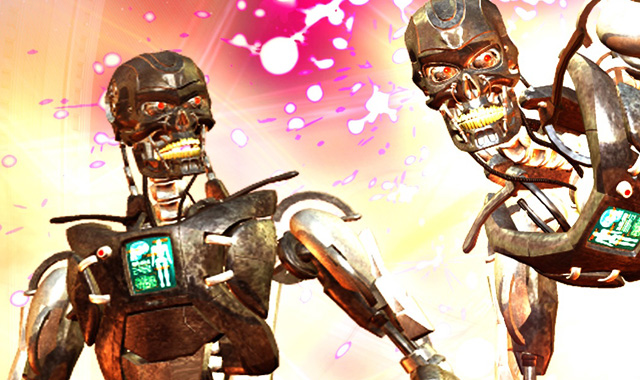
Artificial intelligence boosters predict a brave new world of flying cars and cancer cures. Detractors worry about a future where humans are enslaved to an evil race of robot overlords. Veteran AI scientist Eric Horvitz and Doomsday Clock guru Lawrence Krauss, seeking a middle ground, gathered a group of experts in the Arizona desert to discuss the worst that could possibly happen — and how to stop it.
Their workshop took place last weekend at Arizona State University with funding from Tesla co-founder Elon Musk and Skype co-founder Jaan Tallinn. Officially dubbed “Envisioning and Addressing Adverse AI Outcomes”, it was a kind of AI doomsday games that organised some 40 scientists, cybersecurity experts and policy wonks into groups of attackers (the red team) and defenders (blue team) playing out AI-gone-very-wrong scenarios, ranging from stock-market manipulation to global warfare.
Horvitz is optimistic — a good thing because machine intelligence is his life’s work — but some other, more dystopian-minded backers of the project seemed to find his outlook too positive when plans for this event started about two years ago, said Krauss, a theoretical physicist who directs ASU’s Origins Project, the programme running the workshop. Yet Horvitz said that for these technologies to move forward successfully and to earn broad public confidence, all concerns must be fully aired and addressed.
“There is huge potential for AI to transform so many aspects of our society in so many ways. At the same time, there are rough edges and potential downsides, like any technology,” said Horvitz, MD of Microsoft’s Research Lab in Redmond, Washington. “To maximally gain from the upside we also have to think through possible outcomes in more detail than we have before and think about how we’d deal with them.”
Participants were given “homework” to submit entries for worst-case scenarios. They had to be realistic — based on current technologies or those that appear possible — and five to 25 years in the future. The entrants with the “winning” nightmares were chosen to lead the panels, which featured about four experts on each of the two teams to discuss the attack and how to prevent it.
Turns out many of these researchers can match science-fiction writers Arthur C Clarke and Philip K Dick for dystopian visions. In many cases, little imagination was required — scenarios like technology being used to sway elections or new cyberattacks using AI are being seen in the real world, or are at least technically possible. Horvitz cited research that shows how to alter the way a self-driving car sees traffic signs so that the vehicle misreads a “stop” sign as “yield.”
The possibility of intelligent, automated cyberattacks is the one that most worries John Launchbury, who directs one of the offices at the US’s Defence Advanced Research Projects Agency, and Kathleen Fisher, chairwoman of the computer science department at Tufts University, who led that session. What happens if someone constructs a cyber weapon designed to hide itself and evade all attempts to dismantle it? Now imagine it spreads beyond its intended target to the broader Internet. Think Stuxnet, the computer virus created to attack the Iranian nuclear programme that got out in the wild, but stealthier and more autonomous.
“We’re talking about malware on steroids that is AI-enabled,” said Fisher, who is an expert in programming languages. Fisher presented her scenario under a slide bearing the words “What could possibly go wrong?”, which could have also served as a tagline for the whole event.
How did the defending blue team fare on that one? Not well, said Launchbury. They argued that advanced AI needed for an attack would require a lot of computing power and communication, so it would be easier to detect. But the red team felt that it would be easy to hide behind innocuous activities, Fisher said. For example, attackers could get innocent users to play an addictive videogame to cover up their work.
To prevent a stock-market manipulation scenario dreamed up by University of Michigan computer science professor Michael Wellman, blue team members suggested treating attackers like malware by trying to recognise them via a database on known types of hacks. Wellman, who has been in AI for more than 30 years and calls himself an old-timer on the subject, said that approach could be useful in finance.
Beyond actual solutions, organisers hope the doomsday workshop started conversations on what needs to happen, raised awareness and combined ideas from different disciplines. The Origins Project plans to make public materials from the closed-door sessions and may design further workshops around a specific scenario or two, Krauss said.

Darpa’s Launchbury hopes the presence of policy figures among the participants will foster concrete steps, like agreements on rules of engagement for cyberwar, automated weapons and robot troops.
Krauss, chairman of the board of sponsors of the group behind the Doomsday Clock, a symbolic measure of how close we are to global catastrophe, said some of what he saw at the workshop “informed” his thinking on whether the clock ought to shift even closer to midnight. But don’t go stocking up on canned food and moving into a bunker in the wilderness just yet.
“Some things we think of as cataclysmic may turn out to be just fine,” he said. — (c) 2017 Bloomberg LP

